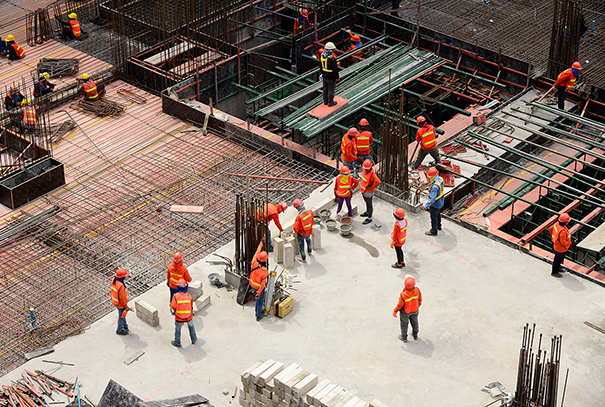
However, the content in our Q1 Summary is overshadowed by the implications of Covid-19.
We believe that the vast majority of Construction Projects will have to stop work; the question of policy coverage will arise for non-damage causes that result in delay and potentially/ultimately financial loss to owners. Construction insurers are reviewing their portfolios with trepidation, attempting to establish polices that include delay insurance and where they may receive notifications in due course. Insurance coverage and policy understanding for any future similar scenarios is under review and will take time to be addressed fully.
The wider market implication and loss of reserves/capital to the insurance markets is yet to be established but we know the total cost will be significant.
Leaving aside the impact of COVID-19, over the past year we have seen increased rates and cover restrictions across all classes. Insurers now require a more in-depth technical understanding of the risk and consequently there is ever increasing importance placed on the underwriting submission.
While coverage continues to be available in the London market, underwriting authority is reduced, particularly impacting the regional hubs where cover has, in some cases, become difficult to obtain.
Construction “All Risks”
Upward pricing trends have continued with rate increases impacting both civil engineering and building projects in the UK. Risks with greater potential for water damage or complex works involving high value existing structures have been most severely impacted.
Water damage excesses continue to be an area of focus and many insurers now consider GBP50,000 per claim to be the minimum acceptable level.
The insurance industry efforts to address water related issues also continue with the publication of the 5th edition of the Construction Insurance Risk Engineers Group guidance note.
Insurers are also seeking to manage their long term exposures in an effort to avoid under-pricing on multiyear projects, where they have previously suffered losses on long term fixed rates.
In terms of capacity, while a number of historically strong CAR insurers withdrew at the start of the year, there were few meaningful exits in the second half of 2019. However, some insurers, such as Liberty and Castel, have entered the market, while others continue to maintain growth strategies within their defined risk appetite.
Casualty
2019 continued with the corrective action which swept in during 2018. Lloyd’s “Decile 10” review of this sector, a full in depth analysis of the 10 worst performing classes, resulted in significant action being taken against some of the largest syndicates in this class with civil engineers one of the areas under scrutiny.
This has resulted in a sizable shift in attitude amongst Casualty Insurers, with increased focus on their Combined Operating Ratios; or in layman’s terms, underwriting for profit rather than top-line income.
One effect of this change is that insurers have a reduced appetite for participation on the lower layers of a liability tower, particularly at a GBP1m attachment point. Where insurers do deploy capacity at this level they are limiting.
Another consequence is insurers are limiting their exposure on multiple layers of the same risk on the condition that they do not participate on consecutive layers. Following several high profile refurbishment fires, the addition of heat conditions to the policy wording is also becoming more prevalent.
As highlighted in previous publications; whilst this paints a fairly negative picture, the good news is that there is still significant capacity for the right risks, both managed and brokered correctly. The quality of the underwriting submission means that where brokers present meaningful information to underwriters, they are still able to secure meaningful terms for their clients.
Construction Professional Indemnity (PI) market
The biggest change has been in the Professional Indemnity market conditions. The results of the remedial plans put in place by Lloyd’s for 2019 which saw caps placed on insurer’s gross written premiums (GWP) have continued into 2020 and rates are still rising at levels not seen since 2002. Whilst some insurers have reported greater flexibility on the capacity they can deploy in 2020, we still expect many to have limited appetite for new business and this will continue to create pricing tensions on most renewals, particularly in light of Covid-19, after new business.
Overall, the Construction PI market capacity has roughly halved in the last 18 months, and this reduction in capacity continued with five further Lloyd’s insurer “books” being placed into runoff since November 2019. Insurers are continuing to push for higher levels of self-insured retentions to further manage their exposures and absolute coverage exclusions on combustibility and Fire Safety in buildings have become more commonplace, with insurers continuing to scrutinise the extent of cladding project reviews undertaken by contractors and their compliance with the relevant building regulations.
It is difficult to forecast how long these hard market conditions will continue; PI, being by nature a long tail class of business, we expect insurers to remain very cautious for the remainder of the year. Aside from Argenta Syndicate entering PI there are no further signs of new capacity entering the market in 2020, but previous cycles would suggest that eventually new capital will be attracted by potential returns and a much improved rating environment; however, the timing of this is equally difficult to predict and is likely to be further compounded by the issues facing insurers arising from Covid-19.
With almost all brokers and underwriters now working remotely, it is extremely important for clients to prepare well in advance of their renewal date to establish a renewal strategy and engage with a range of markets. As in 2019, the quality of the underwriting submission is of the utmost importance in being able to secure renewal terms, particularly on risks with distressed claims experience.


